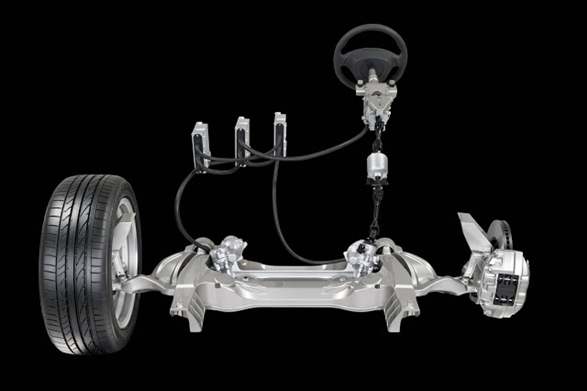Nissan has unveiled the world's first steer-by-wire system, and plans to sell cars with the new technology within a year.
A steer-by-wire system replaces the mechanical steering arrangement fitted to all current production cars with an electronic unit which senses the movement of the steering wheel and steers the wheels accordingly.
The technology is already commonly used in aeroplanes but this would be the first time such a system has been used in a production car.
Nissan claims that the system would offer an improved driving experience by relaying the information from the driver to the wheels more quickly than is possible with a traditional mechanical system.
On top of this, drivers would also be insulated from steering feedback caused by poor road surfaces, making for a more comfortable driving experience.
However, if Nissan's steer-by-wire system is to become successful, the company will need to assuage motorists' concerns over the safety of the technology.
The problem is that a system completely controlled by electronics is potentially prone to sudden failure. This is seen as a 'bad thing'.
Mercedes tried to introduce a brake-by-wire system on its road cars in 2004; however, the project was shelved after it was discovered that the system didn't work properly.
To offset any safety concerns, Nissan's steer-by-wire system will have a hydraulic back-up which will kick in if anything goes wrong.
The potential advantages of steer-by-wire systems are manifold. By removing the mechanical link between the driver and the wheels, car designers could put the steering wheel anywhere within the car, potentially improving safety by moving the driver's seat away from the front of the vehicle. In addition to this, cars could also be controlled using joysticks, games console controllers or even computer keyboards.
Whether or not this technology will catch on remains to be seen; however, if Nissan's system works, we could see a dramatic change in how cars are designed.
Related used car searches
Search used Nissan











